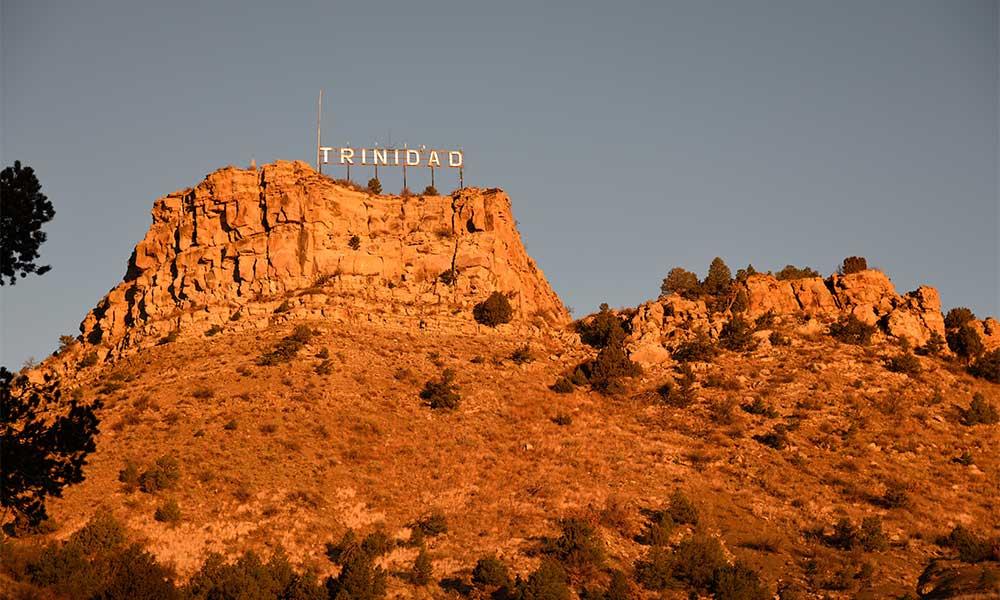
Current Events
Cannabis’ Big Impact on Border Towns
Cities located near state borders in the West are finding cannabis is replacing gold, coal and oil as the latest cause of economic feast—and famine.
Since its founding in 1862, the town of Trinidad, CO has regularly cycled through identities, and economic raisons d’etre. The discovery of rich coal deposits in the rugged mountains along the Santa Fe trail between Denver and New Mexico meant the frontier village started as a mining town (and the way mining conglomerates worked meant Trinidad was also a company town). After the mines slowed and closed, between the 1960s and 2010, a single surgeon’s successful (and controversial) practice earned Trinidad the unofficial title of “sex-change capital of the US.” In the cannabis legalization era, another boom-and-bust cycle has come and gone in Trinidad: a cannabis “border town” that is no longer.
Boom…
Home to about 8300 people, Trinidad saw dozens of cannabis shops open for business after adult-use cannabis sales began in Colorado in 2014. Along with businesses on the town’s main street, an entrepreneur from Denver sold local authorities on permitting the world’s first “marijuana mini mall.” There was so much weed for sale in Trinidad that the community boasted “one pot shop for every 300 people,” according to Amanda Korth, the board president of the Trinidad-Las Animas County Chamber of Commerce.
This had nothing to do with Trinidad itself—they don’t smoke more weed there than they do in Pueblo—but everything to do with geography. About three hours’ drive from Santa Fe, Trinidad is the closest city in Colorado to New Mexico along Interstate-25. That meant Trinidad was an obvious destination for anyone in New Mexico wanting to buy legal weed—and anyone heading south wanting to make a final pit stop before entering dry country.
In Trinidad, the cannabis border-town boom lasted more than eight years. On April 1, legal cannabis sales began in New Mexico, with the full backing of Gov. Michelle Lujan Grisham, who encouraged New Mexico cannabis entrepreneurs to “knock the socks off of this industry” and—somehow—sell more cannabis per year than even Colorado, a more populous state. Cannabis isn’t as heavily taxed in New Mexico as it is in Colorado, and customers can purchase up to two ounces per day—twice Colorado’s one-ounce limit. And unlike California and Colorado, localities can’t opt-out of sales.
…And Bust
As NPR reported, from the beginning, cannabis dispensaries sprung up throughout the southern and eastern parts of the state, in small towns such as Clovis, in classic truck-stop cities such as Las Cruces—anywhere within driving distance of Texas, where cannabis is still illegal.
The Las Cruces location of R. Greenleaf, a dispensary chain owned by Colorado-based Schwazze, is now the company’s “highest grossing store,” with visitors from Texas comprising about half of the customer base, said Justin Dye, Schwazze’s CEO, in a recent telephone interview.
“We’re not there just for the border,” he added, but as data from the first half of the year published by BDS Analytics showed, sales have slowed and plateaued in Colorado overall as they boom in New Mexico. This spells trouble for border towns along the Colorado-New Mexico line—and the beginning of the end for Trinidad’s latest boom.
“You wouldn’t want to buy a store in Trinidad right now,” Dye said. “You wouldn’t want to be an operator there. It’s contracted substantially.” For now, Schwazze and Dye don’t have to worry: Most of their Colorado dispensaries are located in the Denver metro area. Sales are slowing there, too, but at least there’s no concern about out-of-state competition—or a tectonic shift in geography that, such as a factory closing or oil-well going dry, threatens a settlements’ economic vitality.
This isn’t to say that there’s now nothing doing well in Trinidad—just that the “marijuana mini-mall” and the concentration of dispensaries may have outlived their moment.
Life in the New American West
For Korth, the Trinidad Chamber of Commerce president, this is just another cycle, along with mining, sex changes, and now cannabis.
“Those industries left, and so it was boom or bust, feast or famine,” she said. “When the marijuana shops came in, it was a great big boom.” But, she added, offering a counterpoint to the boosterism from New Mexico’s Gov. Lujan Grisham, “they said a lot about the taxes and what the taxes would do for schools and roads, etc. And I haven’t really seen a lot of that.”
As for how long the border bet will last elsewhere, it’s a matter of time and politics—and the bizarre situation of rooting against the march of legalization in red states including Texas and Utah, the latter of which is within a short drive from Dinosaur, CO, on that state’s western edge. There are 183 people in Dinosaur, according to Census figures—and there are three dispensaries, an even higher ratio than Trinidad’s.
Dye thinks Texas will remain dry for a while. “I don’t see Texas having a major program for some time,” he said, a situation owing to the Lone Star State’s deep-red conservatism. “I think this is going to be something for a long time around border towns.”
But there are rumblings to the contrary. Sid Miller, Texas’s ten-gallon-hat-wearing, Trump-supporting agriculture commissioner, recently became the state’s highest-ranking Republican to call for medical-cannabis legalization. If Texas moves even half as quickly as New Mexico, border towns in that state could find their time in the sun shorter even than Trinidad’s — but still part of the same predictable rhythm in the new American west.
























